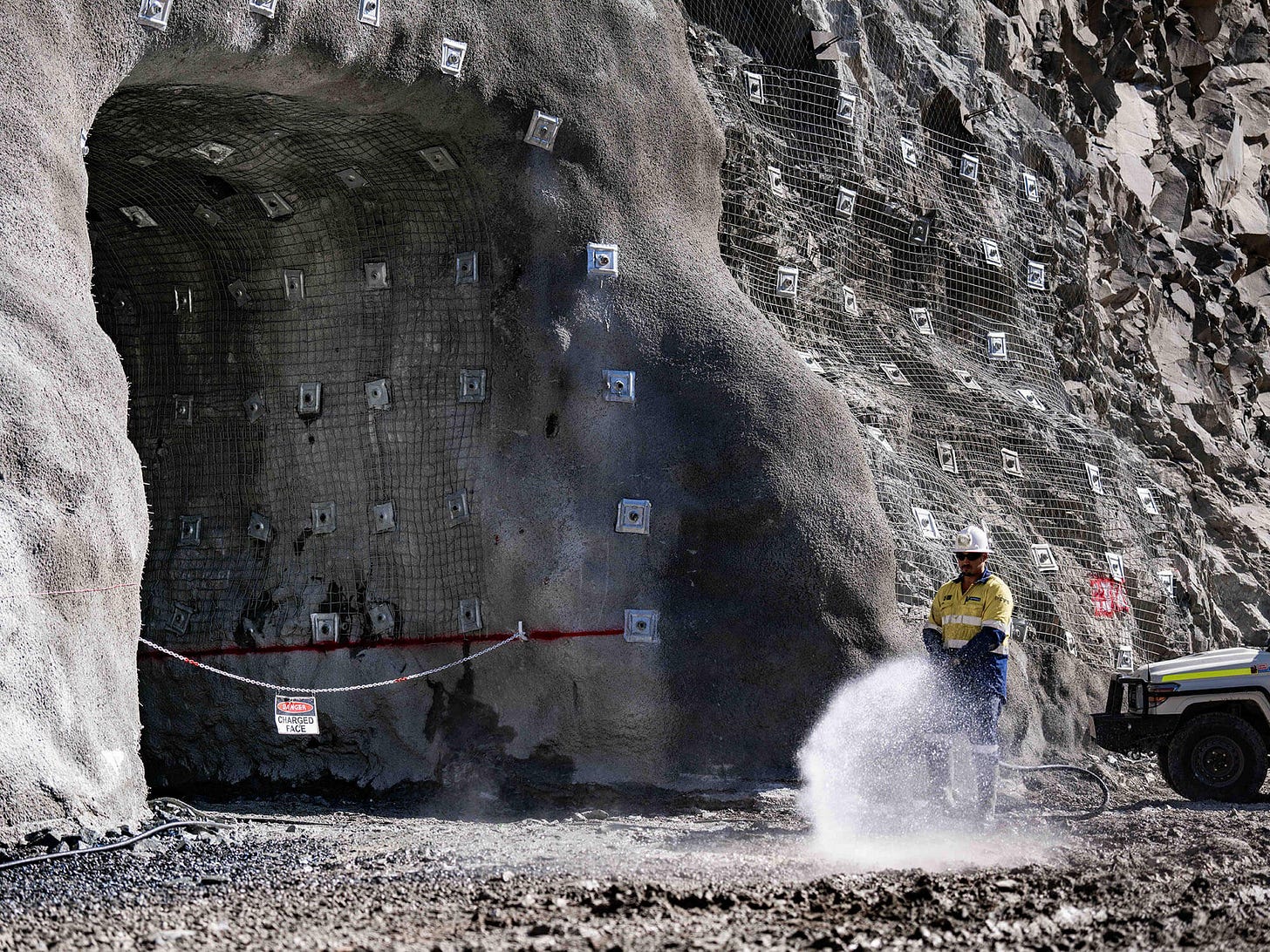Ramelius to Bulk Up with Spartan Acquisition
First big Australian gold deal of 2025 announced
Western Australian mid-tier gold producer Ramelius Resources (ASX: RMS) will acquire high-grade developer Spartan Resources (ASX: SPR) in a deal that values Spartan at A$2.4 billion.
It felt like a matter of ‘when’, not ‘if’, the deal would get done given that Ramelius paid A$180 million in mid-2024 for a 17.9% stake in Spartan and in December, subscribed for shares in Spartan’s A$220 million equity raising to increase its ownership to 19.9%.
Shares in Ramelius lost almost 25% over two days last week after the company’s long-term mine plan for its flagship Mt Magnet operation in WA disappointed.
Spartan’s Dalgaranga gold project, which has a resource of almost 2.9 million ounces of gold at 5.61 grams per tonne gold, will address that issue as it’s only 65km northwest of Mt Magnet.
Speaking on a conference call this morning, Ramelius managing director Mark Zeptner said the addition of Dalgaranga would “supercharge” the Mt Magnet hub to 360,000oz of gold production per annum by 2030, boosting group production to 500,000ozpa.
Ramelius and Spartan will combine via a scheme of arrangement, with Ramelius to offer A25c cash and 0.6957 of a share for every Ramelius share held.
The consideration implies a value of A$1.78 per Spartan share, an 11.3% premium to Friday’s closing price and a 27.5% premium to the 30-day volume weighted average price.
Zeptner said the deal represented a logical and synergistic combination.
“The transaction signifies the combination of complementary and proximate assets with significant work already undertaken to optimise the obvious synergies of the Mt Magnet and Dalgaranga projects,” he said.
“The combined group will have a strong growth profile, with the future development of Dalgaranga, the Eridanus cutback and the Rebecca-Roe project all expected to proceed.
“The combination matches Spartan’s excess processing capacity and high-grade mineral resource with Ramelius’ large mineral resource, currently operating plant and tier one operational team.”
The combined entity expects to have 12.1Moz in resources and 4.4 million tonnes per annum of processing capacity in WA.
The enlarged Ramelius expects to have a pro-forma cash balance of A$505 million and an undrawn A$175 million debt facility.
Zeptner said Ramelius was on track to generate A$250 million of cashflow in the current half.
With a pro-forma market capitalisation of A$4.2 billion, Zeptner said the company was likely to be the largest mid-tier miner outside the two Australian senior producers, Northern Star Resources (ASX: NST) and Evolution Mining (ASX: EVN).
He added that he saw the company becoming the “go-to Australian gold investment”.
Rags to Riches
The acquisition of Spartan caps off an extraordinary ride for the company and its shareholders.
Under executive chairman Simon Lawson, the company made the decision in late 2022 to suspend the previously operating Dalgaranga operation, then a low-grade open pit mine.
Spartan then went through a recapitalisation at A10c per share in early 2023.
The discovery of the high-grade Never Never deposit, just 600m from the plant, changed everything.
The stock hit a record high on Monday and will be added to the S&P/ASX 200 index next week.
The high-grade underground Never Never and Pepper deposits host combined resources of 2.3Moz at 9.32g/t gold.
Last year, the company started building the Juniper decline, which is getting closer to hitting the Never Never orebody.
It will allow for first production from Never Never later this year, initially processed at Mt Magnet, while an integration study will look at processing longer term.
“We’ll make those decisions as we integrate this all together, but we can see very much an accelerated pathway to getting access to that high-grade material, given that we'll be 100m away from it in in May to June this year,” Lawson said.
Lawson will remain with Ramelius as deputy chairman, while Spartan director Deanna Carpenter will also join the Ramelius board.
“I’ll be providing direction into a renewed exploration focus at a number of existing Ramelius assets, as well as the continued drilling and growth of the high-grade Dalgaranga orebodies,” Lawson said.
“I think we’ve proven pretty categorically that you can make discoveries in mature gold fields.”


